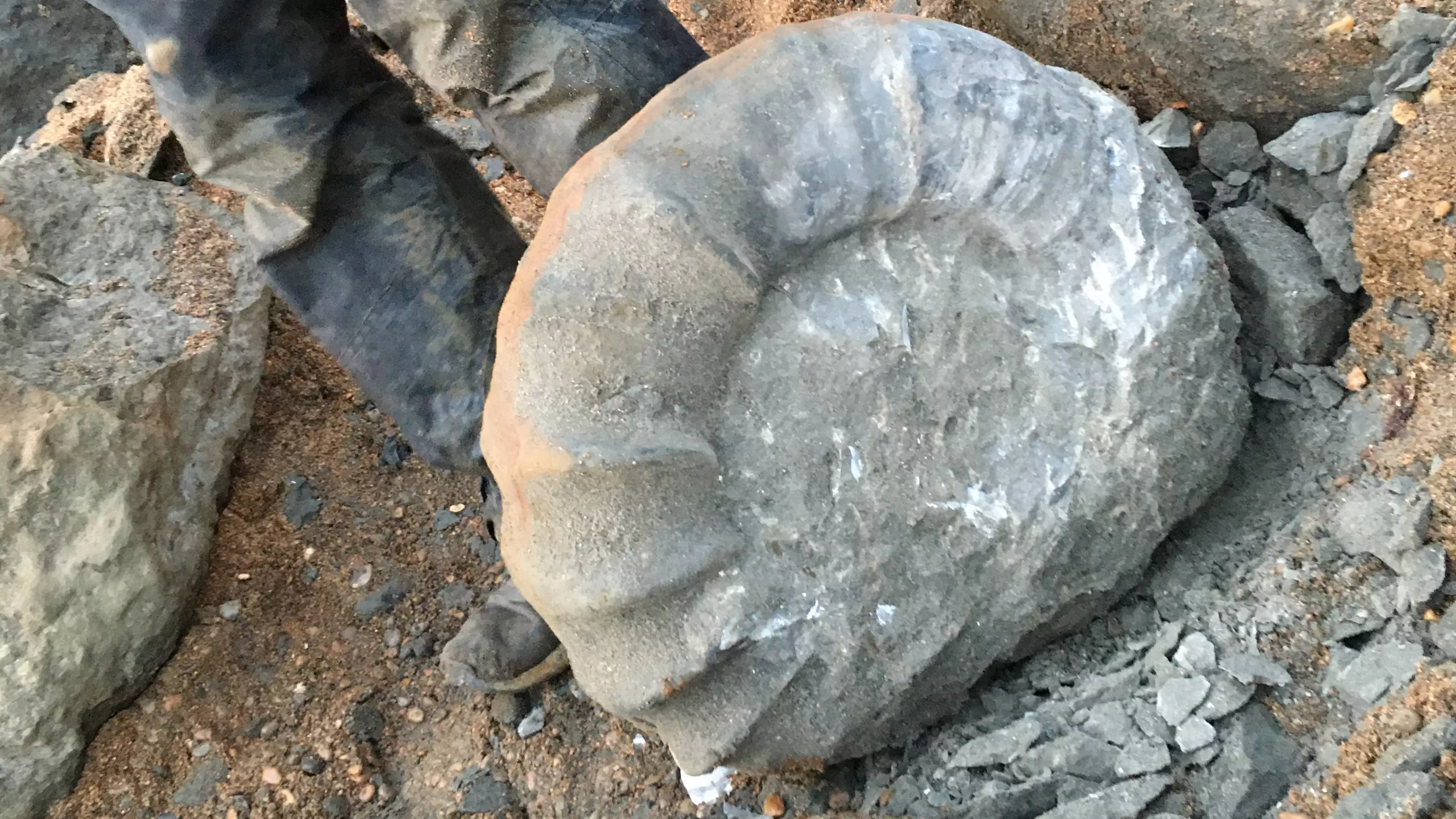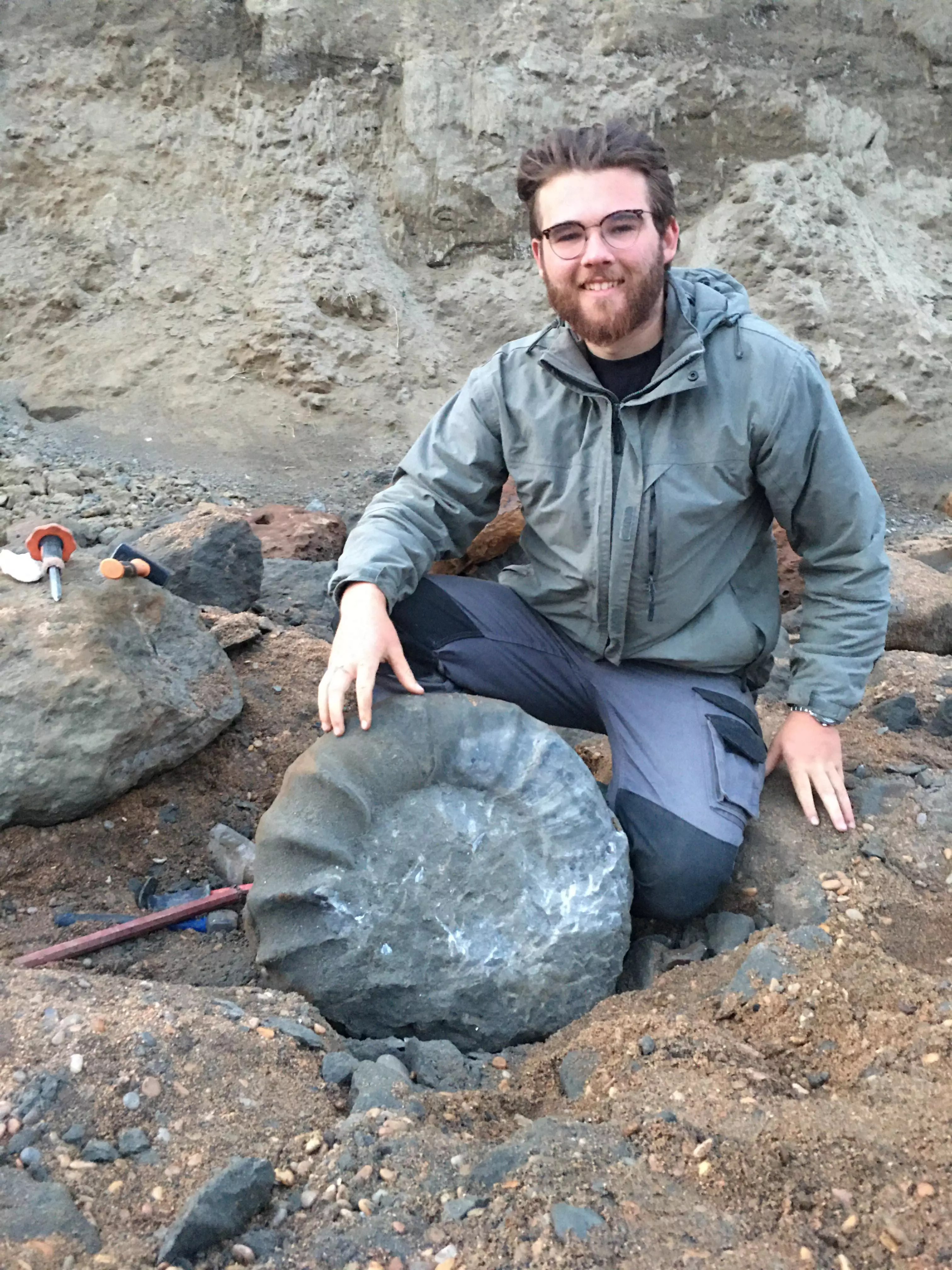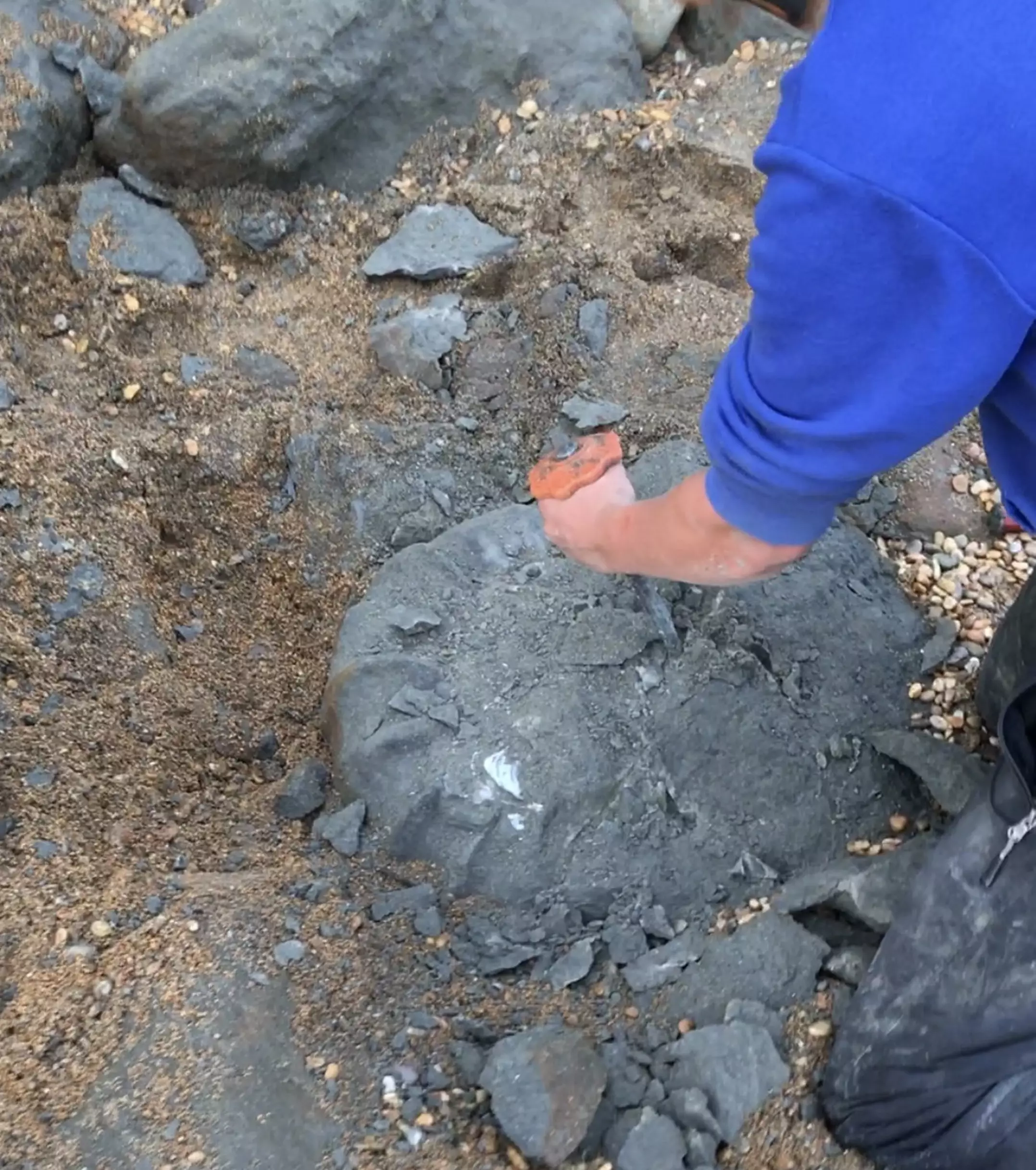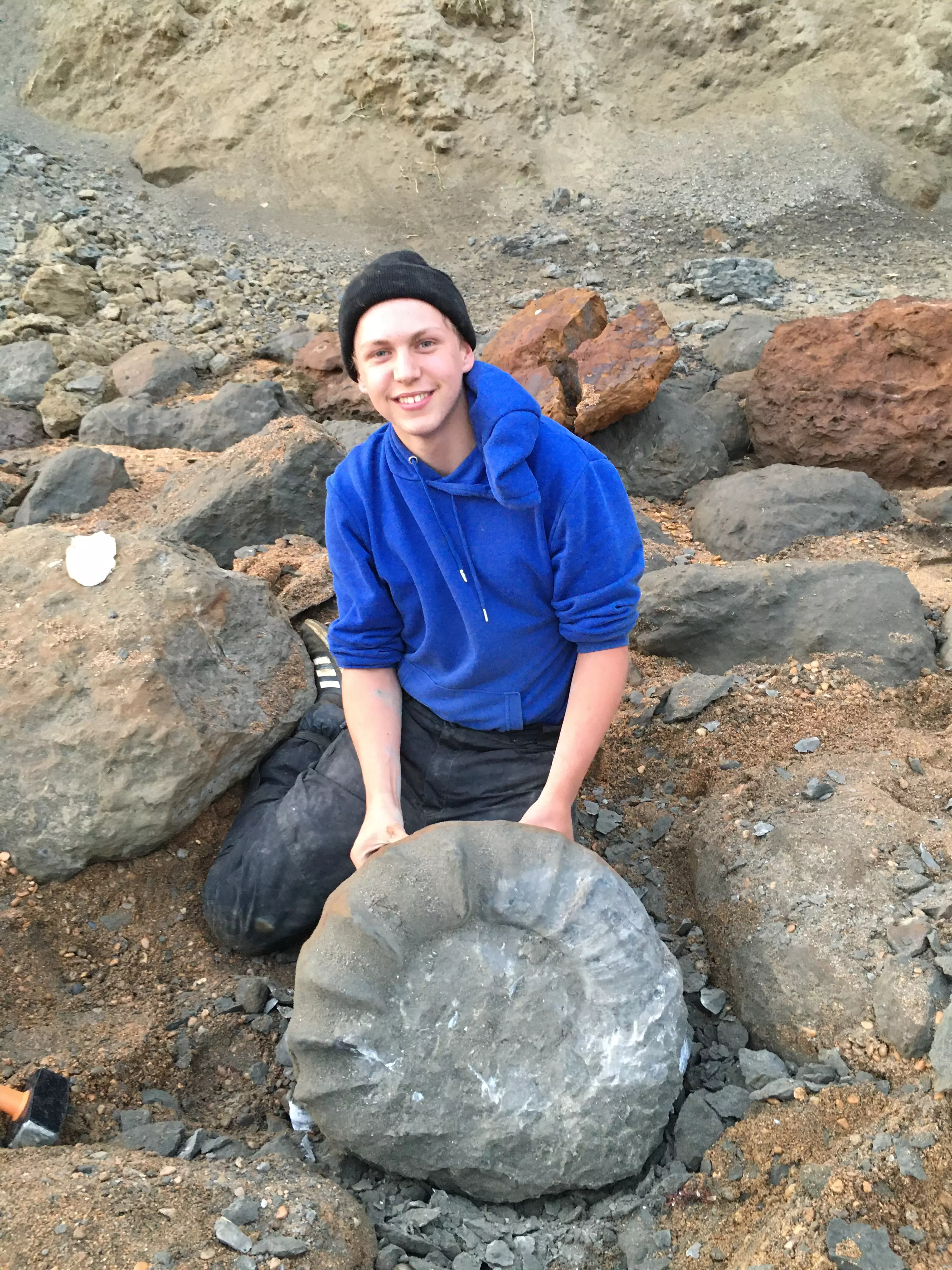
Two university students have discovered a massive ammonite fossil in the Isle of Wight.
Jack Wonfor, 19, and Theo Vickers, 21, found the 212lb (96kg) fossil in the Lower Greensand at Chale Bay, where they spent two hours excavating it and a further eight hours safely moving it from the coastline.

The enormous fossil is thought to be a 115 million year old Tropaeum Bowerbanki, an extinct mollusc that resembles a huge sea snail.
Advert
Jack and Theo, who co-founded Wight Coast Fossils, described it as a 'monstrous heteromorph'.
They said: "At 55cm in diameter and weighing in at 96kg it is a monstrous heteromorph, and an awesome example of just how massive some of these heteromorph ammonites could grow to.
"On average Tropaeum Bowerbanki specimens from the island measure in at around 30cm and 30-50kg, making an individual of this size an uncommon and awesome find."
Clearly, this is a fascinating find, but it's much more fascinating if you actually understand a bit about Tropaeum Bowerbanki, like Jack and Theo. Thankfully, they were kind enough to explain a bit about the creature and how it came to be there.

They said: "In life this giant Tropaeum cruised through the turbulent coastal waters of the Lower Greensand seas catching and ensnaring passing plankton and small prey with its tentacles.
Advert
"While it's large uncoiled heteromorphic shell may not immediately suggest it, recent research has indicated heteromorphs like Tropaeum may have been adept swimmers, [with] their shells reducing friction and allowing them to jettison through the water with relative ease.
"The ammonite itself can also yield clues to the individual life it once led. A Tropaeum of this size is likely to be a large female, known as a macroconch. Many ammonites exhibited distinct sexual dimorphism, with females tending to be much larger than the males, which is seen in many cephalopods alive today.
"Like all of the island's iconic giant ammonites, this behemoth comes from the Lower Greensand group - a series of sandy marine deposits laid down at the end of the early Cretaceous circa 115 million years ago. At this time much of southern England was covered by warm shallow coastal seas home to marine reptiles, sharks, fish and a wealth of ammonites."

Having allowed the creature to the see the light of day for the first time in more than 100 million years, Jack and Theo are now gonna spend some time giving it a much-needed makeover.
Advert
They said: "Over the next few weeks we'll be working hard to prepare and clean up this stunning ammonite, and will be posting updates as it's preparation progresses, in the hope we can restore this Isle of Wight giant to how it may have once looked over 100 million years ago."
Nice work, ammonite LADs.
Featured Image Credit: Solent NewsTopics: UK News, Interesting